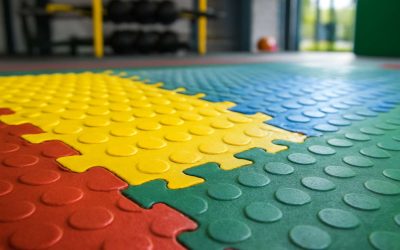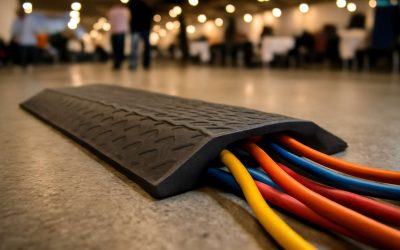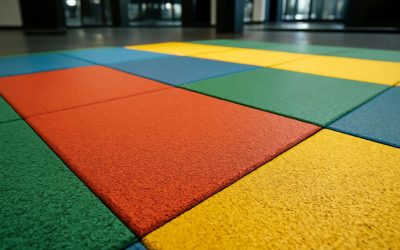You’ve decided to bring your fitness routine to your own home or your business, and you need a comfortable surface to work on. Fortunately, interlocking rubber tiles provide an excellent solution for your floor needs. These durable puzzle pieces snap together easily without the need for adhesives and are designed to withstand even the most rigorous workouts. The material is also soft underfoot, providing the comfort that makes it ideal for a wide range of exercise environments.
When choosing a rubber tile, you’ll want to consider the type of workouts you plan to do and the type of equipment you plan to use. For example, you may need a more resilient, thicker tile for areas in which heavy weights are dropped or sports equipment is stationed. On the other hand, a lighter, thinner tile is better suited for an area in which cardio and light weight training will be done.
The thickness of the tile you choose will also impact the durability and ease of installation. Thicker tiles are more durable and will stand up to more abuse than thinner ones, but they may require some type of adhesive in order to stay attached to the subfloor. Thinner tiles are easier to install, but they may be more likely to separate under the pressure of intense workouts or equipment.
Before laying the rubber tiles, it’s important to make sure the subfloor is level and free of debris such as nails or screws. This will help ensure the tiles lay flat and stay in place over time. The tiles can be laid over carpet, concrete, wood, or other floors that have been previously installed. They can also be placed over existing vinyl or linoleum floors.
Whether you’re using the tiles to protect your existing subfloor or to replace your current flooring, they are easy to clean. Simply use a mild cleaning product and a damp mop. A stronger cleaning solution can be used if needed. You can also hose down the floor to sanitize it.
One of the great benefits of this type of flooring is that it is eco-friendly. Most of the material is recycled from old rubber tires that would otherwise end up in landfills. For every 100 square feet of flooring that’s installed, the manufacturer keeps over 40 pounds of rubber tires out of the waste stream.
The interlocking feature of these tiles makes them a good choice for DIY installation. All you need to do is snap the tiles into place. This saves you money and keeps the cost of hiring a professional installer at bay.
If you’re concerned about a rubber odor, it can be minimized by placing the tiles outdoors for two to three hours prior to installing them in your space. It will also help if you stack the tiles in piles of five to 10 pieces before inserting the connector pins into the slots. This will make the process much faster. You can also purchase a strong rubber odor eliminator to eliminate any unwanted smells that may be present.



0 Comments